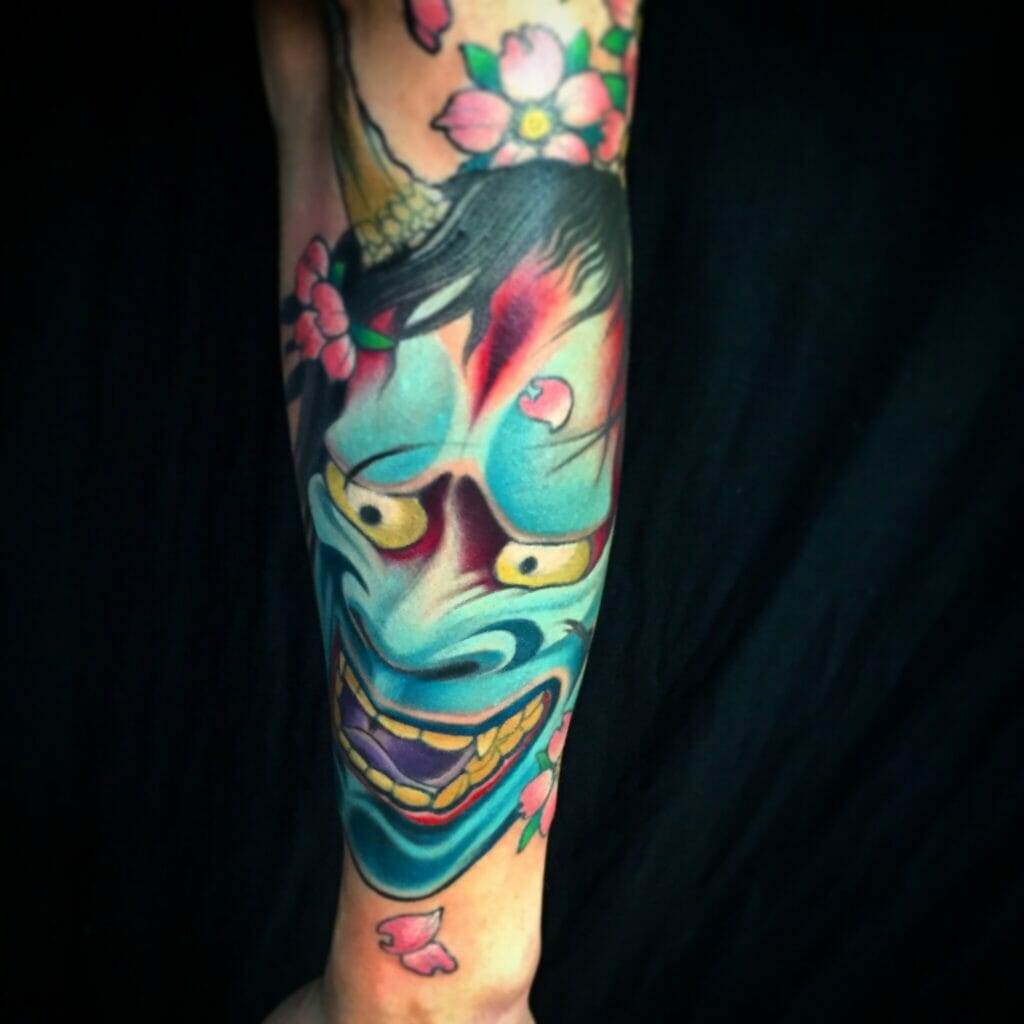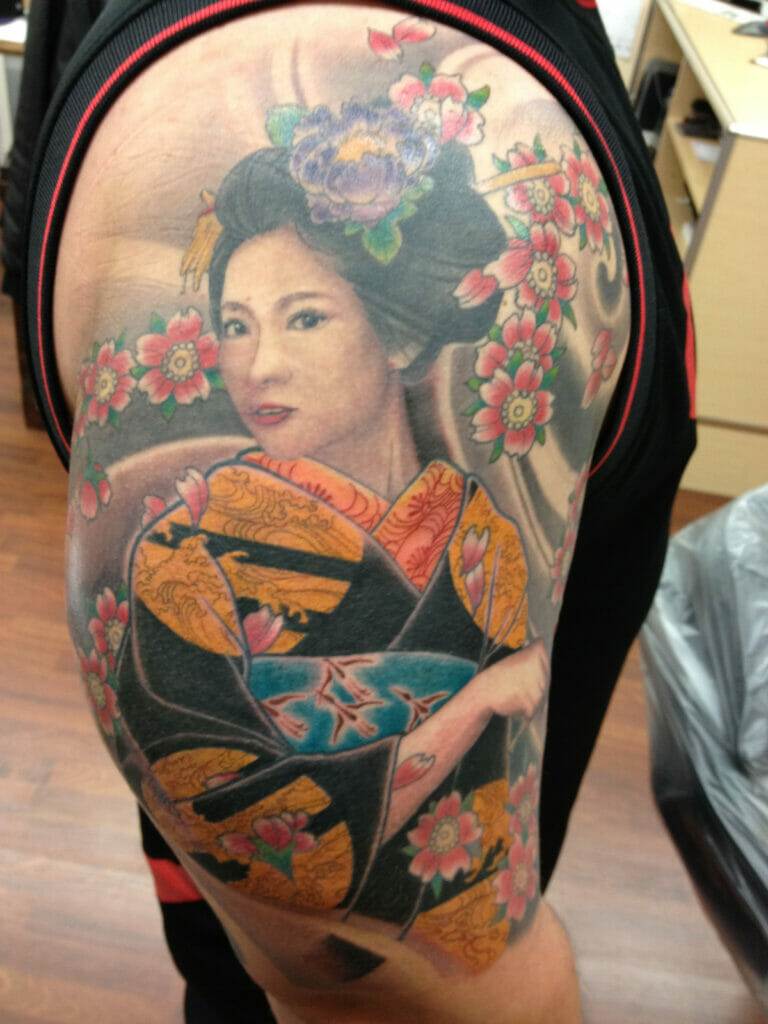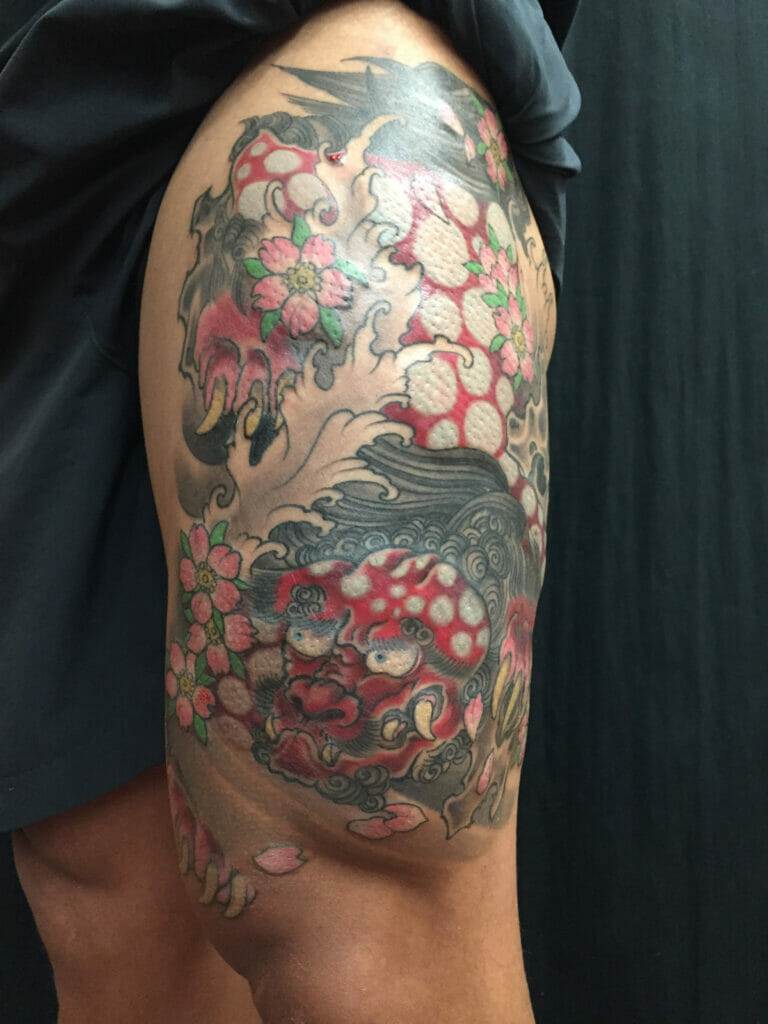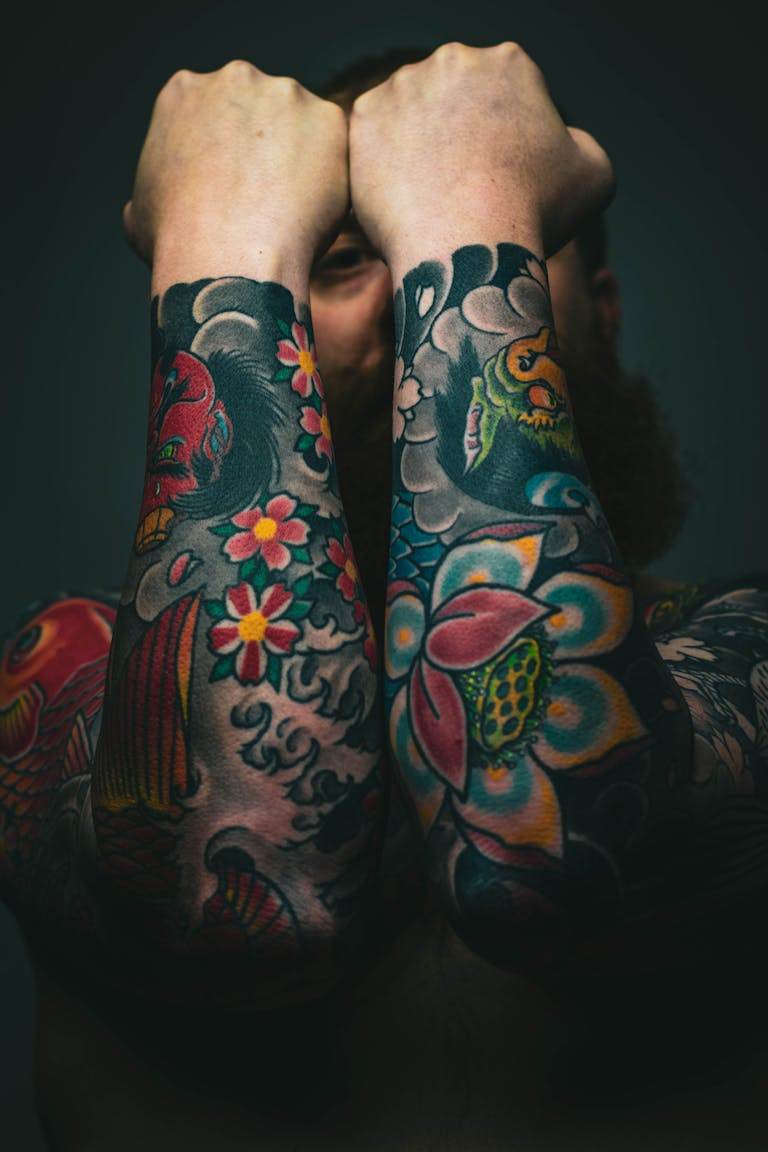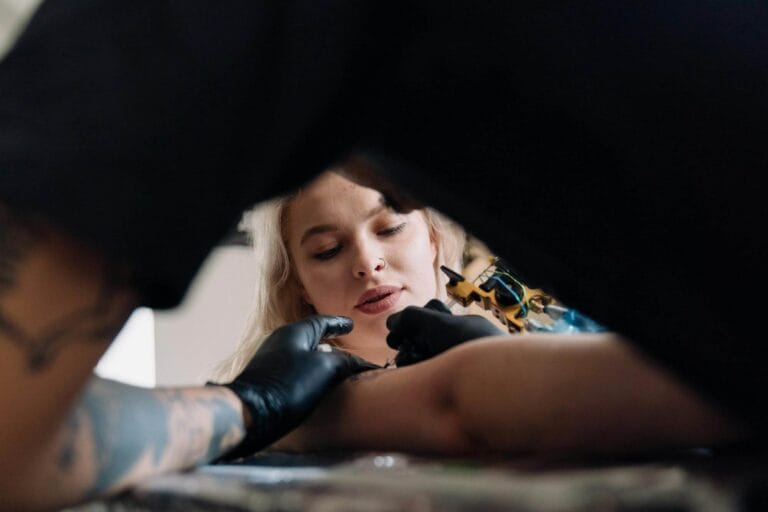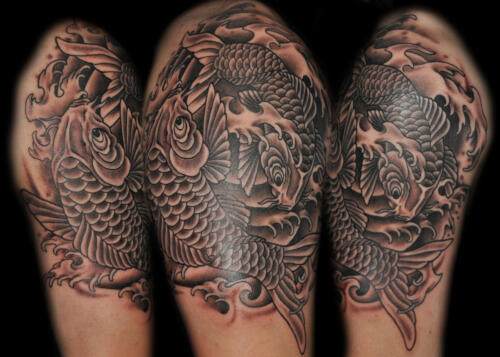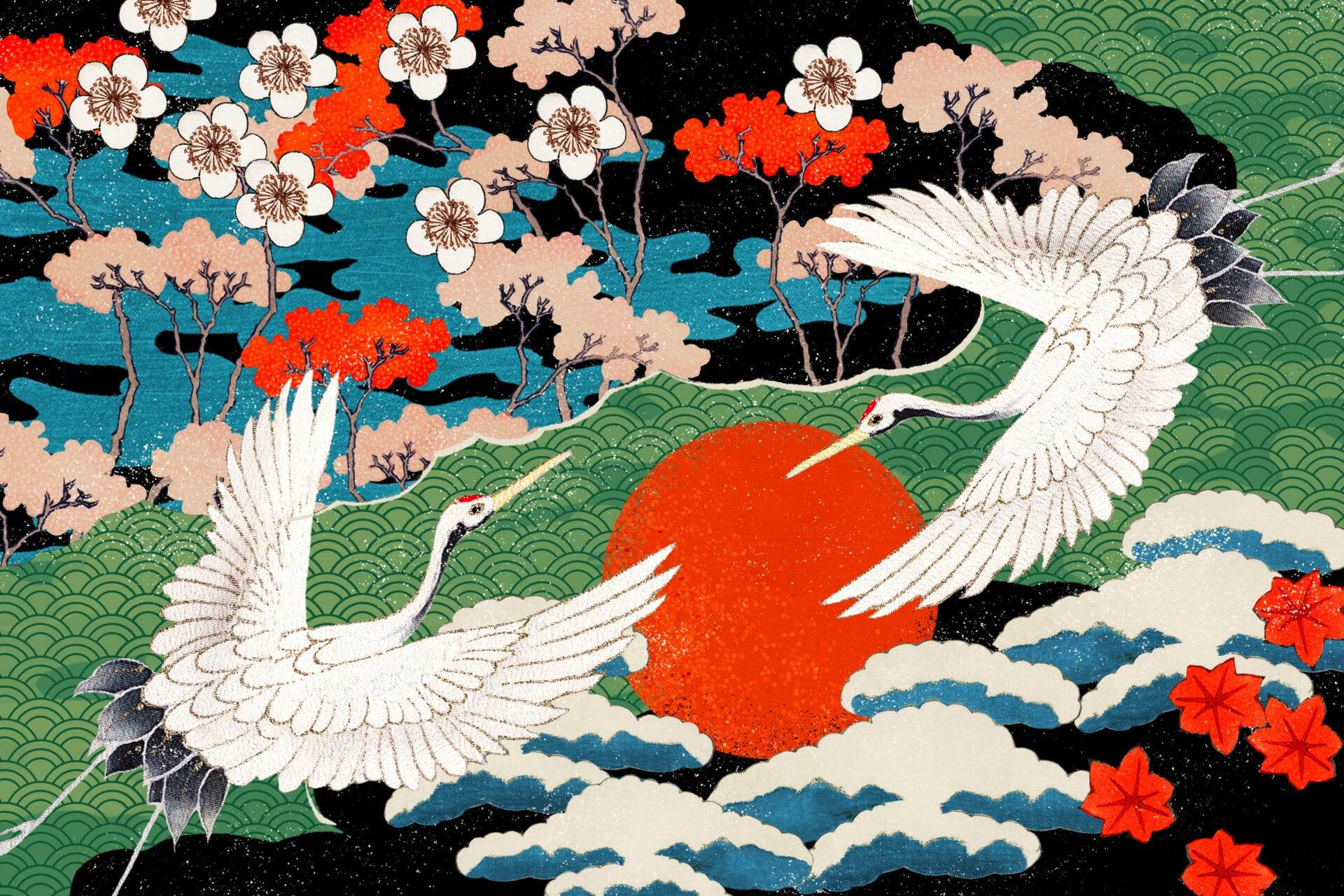
Japanese tattoo motifs have long been revered as an art form that combines intricate designs with deep cultural significance. These tattoos, known as irezumi, have a rich history in Japanese culture and continue to be a popular form of self-expression today. The artistry and symbolism behind Japanese tattoos make them a unique and captivating art form that has captivated people around the world.
In Japanese culture, tattoos hold a special significance. They are seen as a way to express one’s identity, beliefs, and values. Historically, tattoos were used to mark criminals and outcasts in society, but over time they evolved into a form of personal expression and art. Today, Japanese tattoos are admired for their beauty and craftsmanship, and many people choose to get them as a way to honor their heritage or simply appreciate the artistry.
The History of Japanese Tattoos
The history of Japanese tattoos dates back thousands of years. In ancient times, tattoos were associated with criminality and were used to mark criminals as a form of punishment. This association with criminality led to tattoos being stigmatized in Japanese society for many years.
However, in the Edo period (1603-1868), tattoos began to gain popularity among the working class. Tattooing became a way for people to express their individuality and rebel against societal norms. Tattoo artists, known as horishi, developed their own unique styles and techniques during this time.
In modern times, tattoos have become more mainstream in Japan. Many young people now see them as a form of self-expression and fashion statement. Tattoo artists have gained recognition for their skill and creativity, and there are now tattoo conventions and exhibitions held throughout Japan.
The Significance of Traditional Japanese Tattoo Motifs
Traditional Japanese tattoo motifs hold deep cultural significance. These motifs often depict elements from nature, such as cherry blossoms, koi fish, dragons, and samurai warriors. Each motif carries its own symbolism and meaning.
For example, cherry blossoms are a popular motif in Japanese tattoos and symbolize the transient nature of life. They represent beauty, fragility, and the fleetingness of existence. Koi fish, on the other hand, symbolize perseverance and determination. They are often depicted swimming upstream, representing the struggle to overcome obstacles.
These traditional motifs are not chosen at random; they are carefully selected to convey specific meanings and messages. Japanese tattoo artists work closely with their clients to understand their personal stories and values, and then create a design that reflects these aspects.
The Role of Nature in Japanese Tattoo Design
Nature plays a significant role in Japanese tattoo design. The natural elements depicted in these tattoos often represent different aspects of life and the human experience.
For example, cherry blossoms are a symbol of beauty and the transient nature of life. They bloom for a short period of time before falling to the ground, reminding us of the impermanence of all things. Similarly, waves are a common motif in Japanese tattoos and represent the ebb and flow of life. They symbolize both the power and unpredictability of nature.
Other natural elements commonly depicted in Japanese tattoos include mountains, rivers, and animals such as tigers and dragons. These elements are used to convey specific meanings and messages, such as strength, resilience, and protection.
The Symbolism of Japanese Mythology in Tattoo Art
Japanese mythology is rich with stories and characters that have been incorporated into tattoo art. Mythological figures such as dragons, phoenixes, and yokai (supernatural creatures) are often depicted in Japanese tattoos.
Dragons, for example, are seen as powerful and wise creatures that possess great strength and wisdom. They are often depicted as protectors or guardians in Japanese tattoo art. Phoenixes, on the other hand, symbolize rebirth and transformation. They are often depicted rising from the ashes, representing the ability to overcome adversity and start anew.
These mythological figures and stories add depth and meaning to Japanese tattoo designs. They allow individuals to connect with their cultural heritage and express their beliefs and values through their tattoos.
The Beauty of Japanese Calligraphy in Tattoo Design
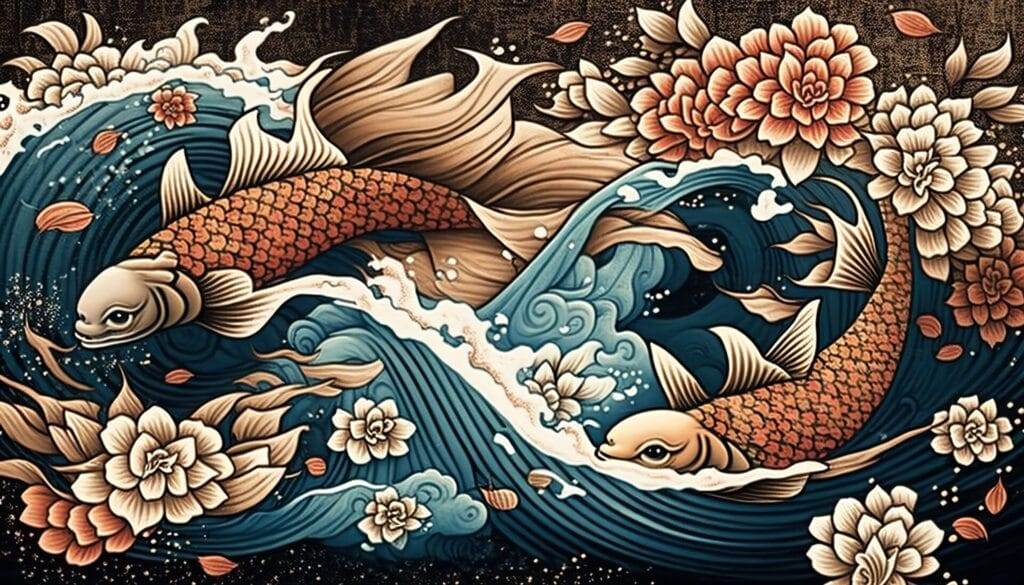
Calligraphy, known as shodo in Japanese, is an important element of Japanese tattoo design. It is the art of writing characters using a brush and ink, and it has a long history in Japan.
In Japanese tattoo art, calligraphy is used to convey specific meanings and messages. Each character has its own unique shape and stroke order, which can change the meaning of the word. Tattoo artists carefully select and arrange characters to create a design that reflects the client’s desired message.
Calligraphy adds a sense of elegance and sophistication to Japanese tattoos. The brush strokes are fluid and expressive, creating a visual impact that complements the overall design. It is not uncommon for people to get tattoos of their favorite quotes or words in Japanese calligraphy as a way to express their personal beliefs or values.
The Influence of Samurai Culture in Japanese Tattooing
Samurai culture has had a significant influence on Japanese tattooing. The samurai were warriors who lived by a strict code of honor known as bushido. They were known for their bravery, loyalty, and skill in battle.
Samurai motifs such as swords, armor, and masks are commonly depicted in Japanese tattoos. These motifs symbolize strength, courage, and the warrior spirit. They are often used to represent personal qualities such as determination, resilience, and honor.
The samurai code of bushido continues to inspire people today, and many individuals choose to get tattoos that reflect these values. These tattoos serve as a reminder of the importance of living with integrity and honor.
The Intricacy of Japanese Geometric Patterns in Tattoo Art
Geometric patterns are an important element of Japanese tattoo design. These patterns are often used to create a sense of balance and harmony in the overall design.
Traditional Japanese geometric patterns, known as kamon, are often used as a background or border for larger tattoo designs. These patterns are made up of repeating shapes and symbols, such as circles, squares, and triangles. They are meticulously arranged to create a visually pleasing and symmetrical design.
These geometric patterns also have their own symbolism. For example, the circle represents eternity and perfection, while the square represents stability and balance. These patterns add depth and complexity to Japanese tattoos, making them visually striking and captivating.
The Artistic Expression of Japanese Irezumi Tattoos
Japanese irezumi tattoos are known for their artistic creativity and individuality. These tattoos are often large and cover a significant portion of the body, such as the back or arms.
Irezumi tattoos are created using a combination of techniques, including shading, color blending, and fine line work. The result is a highly detailed and visually stunning tattoo that showcases the artist’s skill and creativity.
These tattoos often tell a story or convey a specific message. They can depict scenes from Japanese folklore, historical events, or personal narratives. Each tattoo is unique to the individual and serves as a form of self-expression.
The Modern Evolution of Japanese Tattoo Design
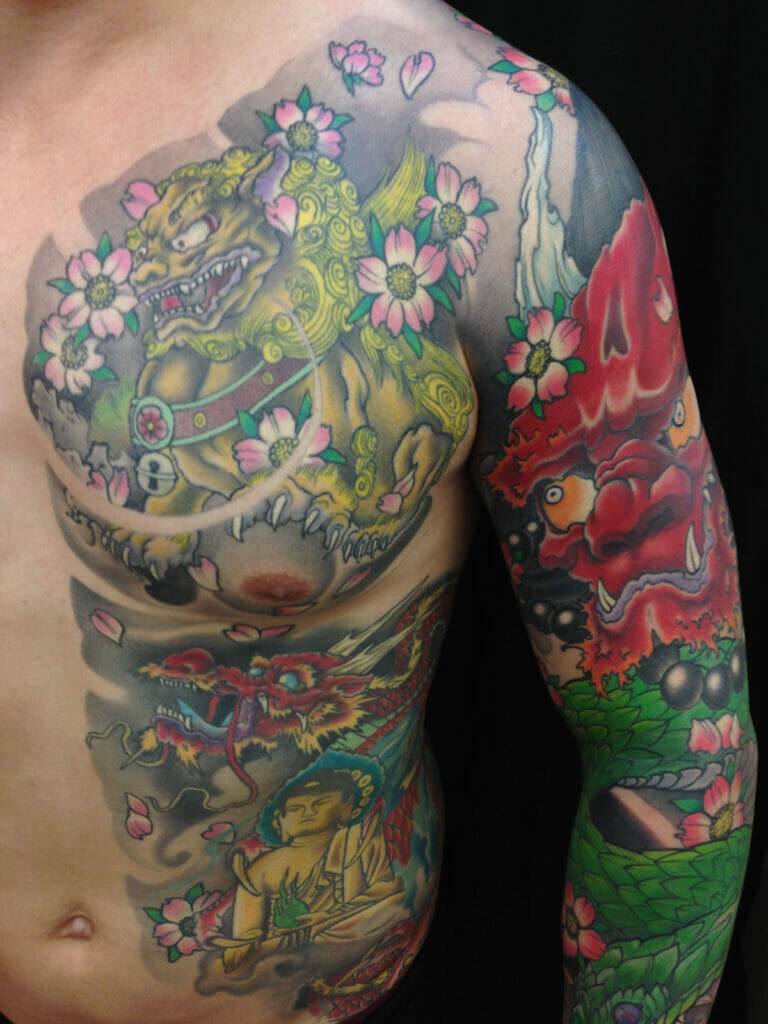
Japanese tattoo design has evolved over time to incorporate modern techniques and styles. While traditional motifs and techniques are still highly regarded, many tattoo artists have embraced new styles and approaches.
One example of this is the use of vibrant colors in Japanese tattoos. Traditionally, Japanese tattoos were done in black ink, but many artists now incorporate bold colors such as red, blue, and yellow into their designs. This adds a new level of visual impact to the tattoos and allows for more creative expression.
Another modern trend in Japanese tattooing is the fusion of different artistic styles. Many tattoo artists now combine traditional Japanese motifs with elements of Western art, such as realism or abstract designs. This fusion of styles creates a unique and contemporary look that appeals to a wider audience.
The Future of Japanese Tattooing: Preservation and Innovation
The future of Japanese tattooing lies in the balance between preserving traditional techniques and motifs, and embracing innovation and modernization. It is important to preserve the rich cultural heritage of Japanese tattooing and ensure that traditional techniques are passed down to future generations.
At the same time, innovation and modernization can help keep Japanese tattooing relevant and thriving. New techniques, styles, and technologies can push the boundaries of what is possible in tattoo art and attract new audiences.
It is also important to continue educating people about the significance and cultural importance of Japanese tattoos. By promoting understanding and appreciation for this art form, we can ensure that it continues to be valued and respected.
Japanese tattoo motifs are a unique and captivating art form that combines intricate designs with deep cultural significance. The history, symbolism, and artistic expression behind these tattoos make them a cherished part of Japanese culture. As Japanese tattooing continues to evolve, it is important to preserve traditional techniques and motifs while embracing innovation and modernization. By doing so, we can ensure that this beautiful art form continues to thrive for generations to come.

